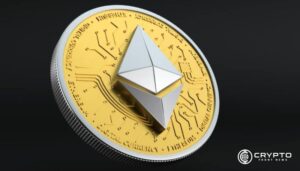- EURC’s launch on Base as the first euro-backed stablecoin aligns with Circle’s strategy, boosting global commerce efficiency.
- MiCA compliance enhances EURC and USDC credibility, potentially shifting market dynamics toward regulated stablecoins.
- Circle’s EMI license strengthens its position, enabling the offering of compliant euro and dollar tokens within the EU.
Circle has announced the launch of EURC on Base, marking the platform’s first euro-backed stablecoin. EURC aims to facilitate faster and cheaper commerce globally. This launch aligns with Circle’s strategy of expanding its stablecoin offerings, as evidenced by USDC’s success on Base, where it circulates over $3 billion as of July 9th.
Besides being a euro-backed digital currency, EURC brings trust and compliance to the ecosystem. Circle’s USDC, already dominant on Base, complements EURC in adhering to the new Markets in Crypto Assets (MiCA) regulation. As a result, their marketability and reputation are increased by this compliance.
Significant Growth Opportunity
Moreover, the launch highlights a significant opportunity. The euro is the third-largest fiat currency globally. Hence, EURC’s integration into the digital economy could drive substantial growth. MiCA’s framework, effective since June 30, further supports this development. It outlines strict requirements for stablecoin issuers, enhancing market trust.
The latest Kaiko report underscores USDC’s growth, with weekly trading volumes doubling from last year. This surge positions USDC to challenge the market share of other stablecoins like First Digital USD (FDUSD). Notably, centralized exchanges (CEX) drive most of this volume, indicating a preference for compliant stablecoins over decentralized alternatives.
MiCA Compliance and Market Impact
Furthermore, the report reveals that EURC and USDC have seen the strongest trading volumes since MiCA’s implementation. This compliance could shift market dynamics, favoring compliant stablecoins. Currently, non-compliant stablecoins dominate with 88% of total volume. However, MiCA may reverse this trend, promoting more regulated options.
Circle’s acquisition of an Electronic Money Institution (EMI) license on July 1 is crucial. This license allows Circle to offer dollar- and euro-pegged tokens within the EU, “onshoring” EURC for European customers. Consequently, it enhances Circle’s market position and compliance credibility.
Additionally, institutional investors may favor compliant stablecoins for derivatives markets. USDC’s growing use in perpetual futures settlement reflects this shift. As regulatory standards evolve, investors seek stablecoins meeting stringent compliance thresholds.
A recent SOLIDUS LABS webinar highlighted the upcoming phase of MiCA, focusing on market abuse prevention, effective by December 30, 2024. To adapt, firms must proactively prepare, establish strong policies, and implement advanced surveillance systems.
Jeremy Allaire, Circle’s CEO, emphasized the readiness of USDC and EURC to thrive under the new regulatory framework. Circle’s compliance track record positions these stablecoins for continued success, fostering trust and adoption in the stablecoin market.




